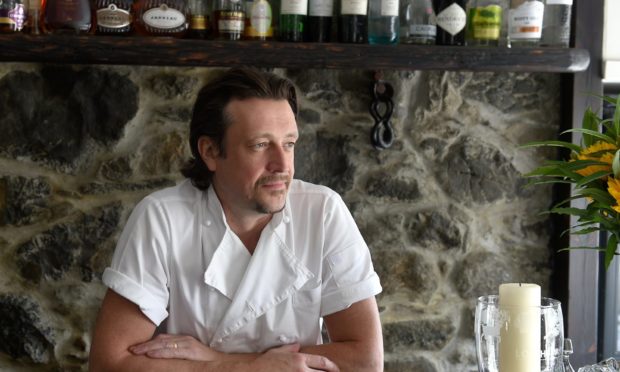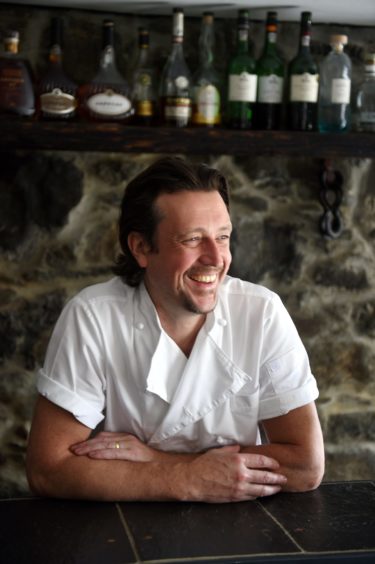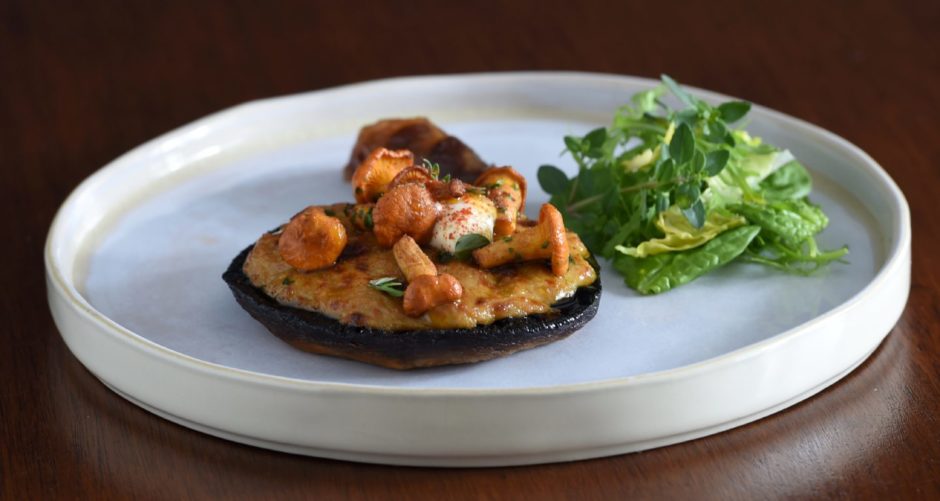Chef Michael Smith tells us what it takes to maintain his ‘star standards’ every year after learning he had retained his for 2021.
Michelin stars represent the cream of the crop when it comes to fine dining and they’re one of the most difficult accolades to achieve, with the majority of recipients having to consistently establish innovative ways of cooking.
But once you receive a star, or two, or sometimes three, that doesn’t set you up for life and each chef has to work equally as hard to maintain their status annually.
A virtual ceremony on Monday evening, hosted by Davina McCall, revealed who the newcomers for the Michelin Guide 2021 were, with the accompanying new app launched shortly after the ceremony affirming those who had maintained their “star standards”.
Four of Scotland’s current one-star Michelin restaurants and a two-star restaurant learned that they’d managed to maintain their “star standards”, which was particularly welcome news after a tumultuous year for the hospitality industry.
Michael Smith – Loch Bay – One Michelin Star
But one of the chefs to hold on to their Michelin star was Michael Smith, who opened his own restaurant on the Isle of Skye called Loch Bay in 2016. Earlier this week, he spoke to The Press and Journal about what it took to retain his Michelin star after a year of cooking in a pandemic.
He said: “Last year was unprecedented, bizarre and bonkers. It was a rollercoaster and that is continuing. We were able to open for a few months and when we re-open with a Michelin star we’ll be trying to work consistently to the level we were at before we had to close because of the pandemic.
“We had to change what we were doing, we had to modify things, and in a lot of ways that had a really positive effect on what we were producing within the restaurant. It gave us time to think about what we were good at, what we were great at and maybe some things that weren’t necessary.
“We edited all that, just because we had the time to do so, and we changed the product. Physically we couldn’t do as many covers and we had to space the tables out, and all that sort of thing. It was kind of tricky but I think it was, from my point of view, a positive opportunity to refine what we were doing before the first lockdown. Then when we had the chance to reopen it meant that we were able to put that into place.
“We’re fortunate that we were able to survive last year and carry on into this year. But Michelin had contacted all the restaurants anyway and they said they were going to come out and be inspecting as normal. They come and inspect you at least once every year, without fail. In fact, they probably do it more than once in a normal year.
“So you don’t get worried about them coming. Obviously you want them to come and review what you’re doing and you want to retain a star. But you don’t set out to do that. The way I look at it is that the Michelin Guide is supporting us as a business. It’s endorsing our product and is endorsing what we’re doing in a positive way and we’re very grateful for that support.
“We want them to come along and we want them to see what we’re doing and I was hoping last year that they would be coming because we had refined everything.”
What it takes
But what does it take to not only run a star-worthy restaurant but to keep a hold of the accolade year after year? Michael says that, a lot of the time, he feels that consistency has the biggest part to play.
He continued: “I think what they look for is consistency first and foremost, and the only way they can judge that consistently on their part is by making sure the restaurants are inspected regularly. It also means consistency in the food, and, in my humble opinion, I think if I was a Michelin inspector, I wouldn’t want to give a Michelin star to a restaurant unless I was sure that the set-up and the food was going to be consistent.
The way I look at it is that the Michelin Guide is supporting us as a business. It’s endorsing our product and is endorsing what we’re doing in a positive way and we’re very grateful for that support.”
Michael Smith
“I think they also want to see dedication from the kitchen and want to have faith that the food which is being produced is from the heart, that the people who are doing it are putting all of their passion and energy into producing the food that goes on the plate. That doesn’t necessarily mean it has to be fancy, or that it has to look very complicated, which I think a lot of people think Michelin star food needs to be like.
“Nowadays Michelin food is all about the quality of the produce and the thought that has gone behind the construction of the menu. Tag words like ‘seasonal’ and ‘local’ produce is also of huge importance now. They look for those things and the equal dedication of both the kitchen team and the front of house team.”
Another thing that Michael highlights is an emphasis on originality, which inspectors would also take into consideration.
He adds: “If you were a Michelin inspector, you’d be going round the whole of Scotland in two weeks and you’ve got to inspect restaurant after restaurant, night after night, I think what would stand out to you would be originality, a menu and a restaurant that has integrity, the conviction to produce the best food possible, and reflects the surroundings that it’s in.
“As an inspector I imagine you wouldn’t want to go to a restaurant that was trying to copy one down the road that had won a Michelin star.
“I think some chefs make the mistake in thinking ‘that chef has a Michelin star, I should be doing what they’re doing’. An inspector may have been at that one the night before then he’s going to go to the next one the next night and notice that they are trying to simulate, rather than originate.”


